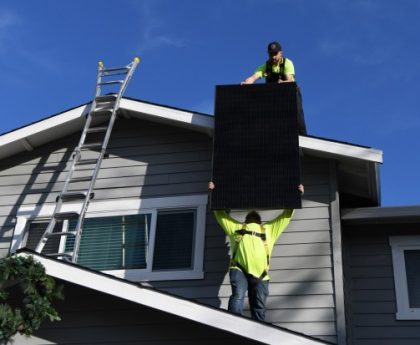As South Africans transition into the colder months, so too do their energy needs and consumption patterns – as well as their solar panel efficiency. “The change in weather, specifically the length of day in winter versus summer, has a direct impact on your solar performance,” says Ross Mains-Sheard, Co-Founder and CEO of Versofy SOLAR.
From the length of day to the angle of the sun in the sky, many factors affect solar panel performance in winter. It is important that we, as consumers, also understand how our energy needs and behaviours shift through the different seasons so that we can implement practical steps to maximise our solar systems at this time of year.
According to Mains-Sheard, regardless of your geographic location, the simple fact that the sun is just not up for as long in winter as it is in summer has the biggest impact on solar systems.
“The angle of the sun also plays a role,” he says. “The sun is lower in the sky in winter, which impacts when it starts hitting your panels at optimum angles, as well as an increased chance of shading occurring.”
Interestingly, cooler temperatures are better for solar efficiency. “Solar panels at the coast perform better relative to those in hot areas like the Karoo, due to the cool sea breeze. It is important to note that solar panels rely on light, not heat. For example, in Europe and the Alps there are solar panels in the snow which work just as well, even though it’s minus five degrees!”
It might seem obvious, but it is also crucial to understand how our energy needs shift through the year, from season to season. In winter, the days are shorter, and the nights are longer, meaning lights are switched on earlier in the morning and evening.
Naturally, you heat more in winter with oil and bar heaters, and electric blankets and you even boil the kettle more frequently for hot drinks. Your geyser works harder because your ambient temperature is much lower, and the geyser must be on for longer periods of time to reach and maintain a temperature. Location, too, plays a part in your seasonality impact. If you live in Cape Town, for example, you are likely to use tumble dryers more because of high winter rainfall, whereas in Johannesburg it’s sunny almost every day.
So how can we optimise our solar efficiency and mitigate the impact of season changes on our systems? “Some practical changes include shifting your loads to sunlight hours if you have solar and installing timers on your geysers, so they work during the day when the ambient temperature is higher,” says Mains-Sheard.
“Our solar app is a great tool as it takes weather conditions and historical usage into account. For example, it knows that if it is going to be a sunny day tomorrow, you can drain the battery more today (and use less from Eskom). The app applies technology that takes the myriad of variables into account, so that you don’t need to.”
Installing more solar panels and batteries would assist with resilience to cloud cover and rain in areas like the Cape during winter. “We encourage more panelling in these areas, and now is a good time to upgrade, as panel prices are at an all-time low due to the high levels of demand.”
A few other practical ways to optimise your solar efficiency in winter:
Use high-power electric appliances when solar panels are generating the most (in the middle of the day); run washing machines and dishwashers at lower temperatures and during sunlight hours; where possible, cook evening meals during the day (using a slow cooker on low power rather than the stove or oven during the evening); wash on sunny days to avoid using the tumble dryer; turn off appliances and lights when not in use; install timers and blankets on geysers.
This post was originally published on 3rd party site mentioned in the title of this site





